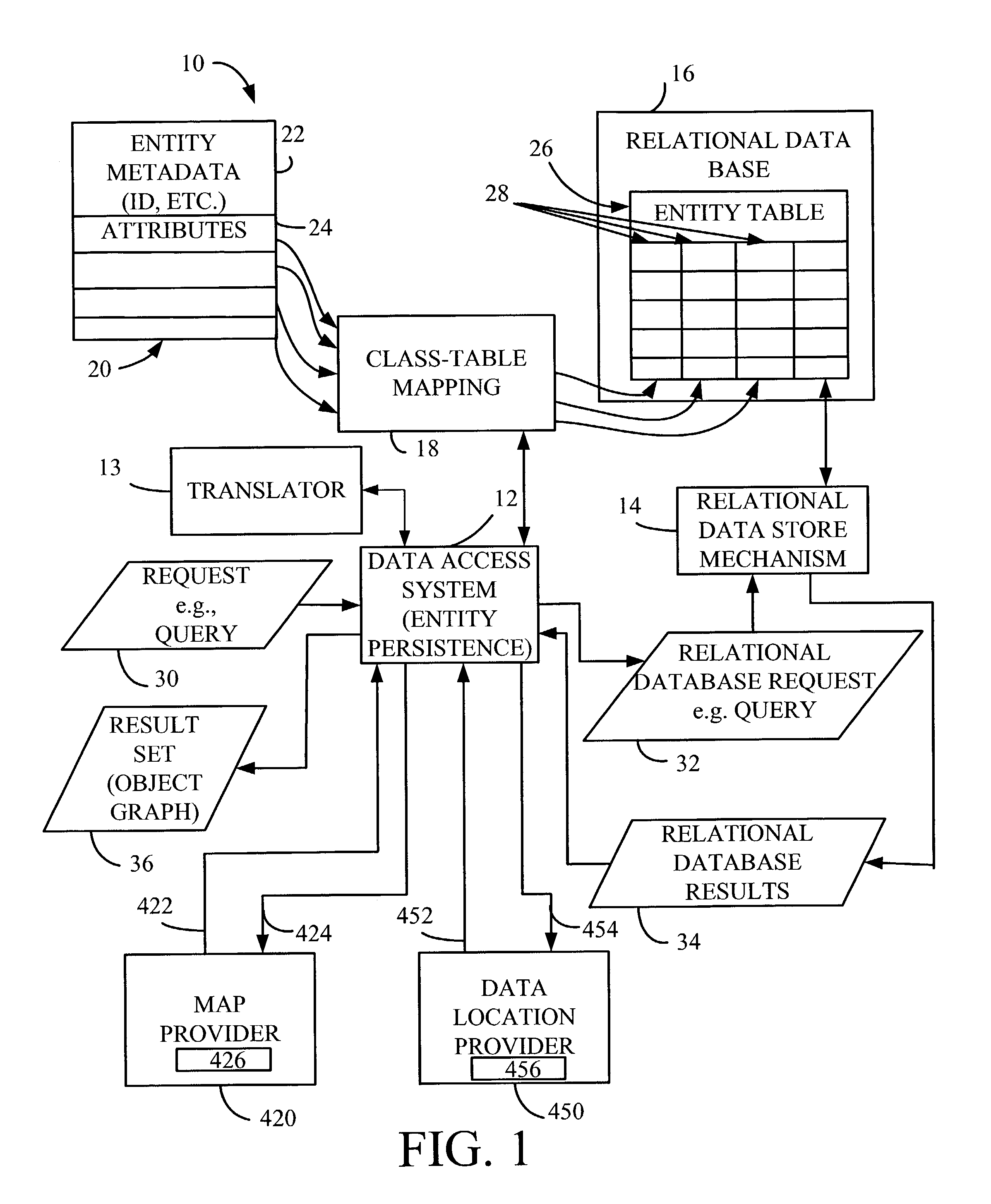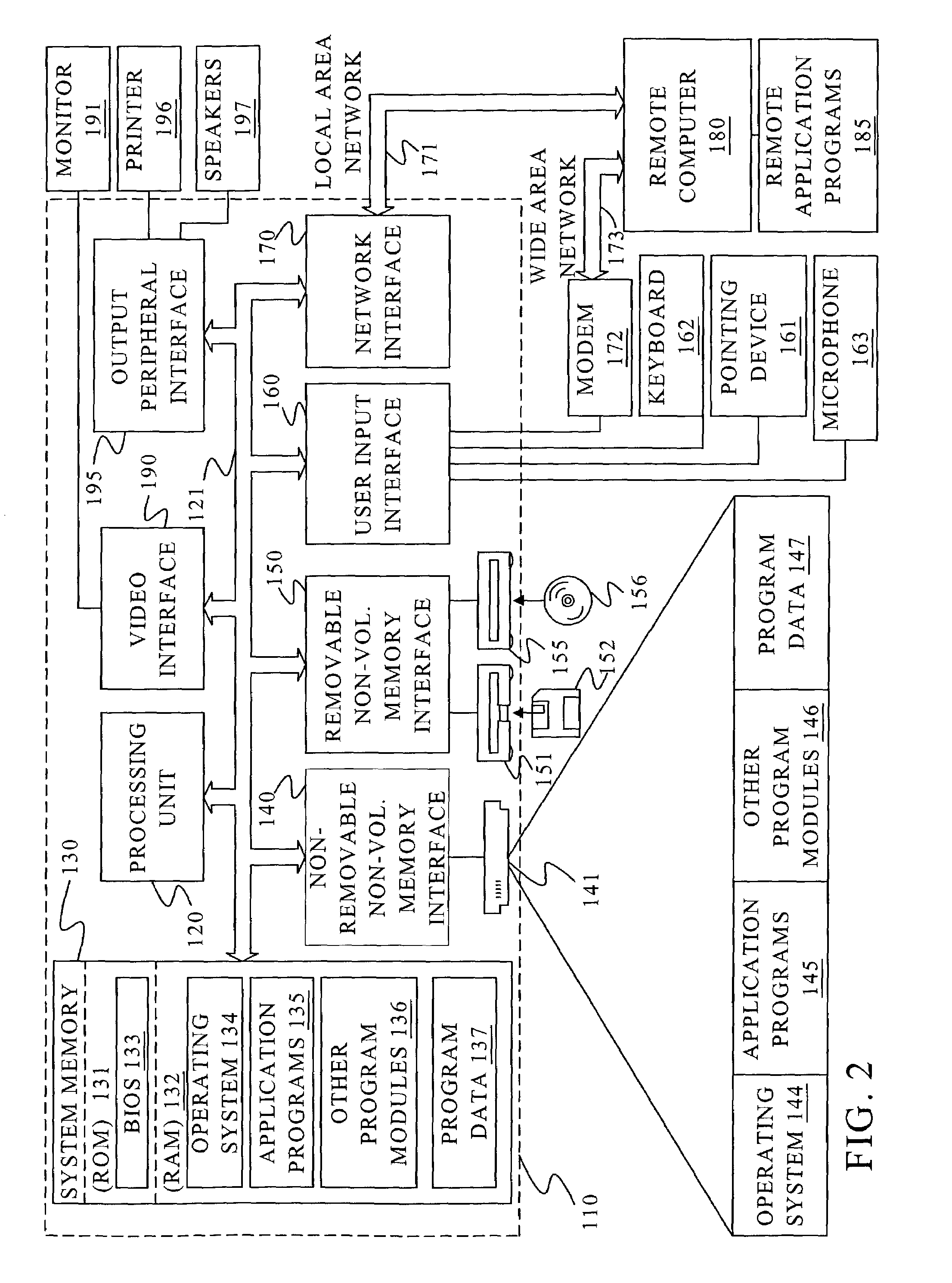Object graph faulting and trimming in an object-relational database system
a database system and object graph technology, applied in the field of database systems, can solve problems such as the inability to optimally access data by reference to properties in the classical relational data model, the cumbersomeness of databases in many applications, and the inability to meet the needs of data processing
- Summary
- Abstract
- Description
- Claims
- Application Information
AI Technical Summary
Problems solved by technology
Method used
Image
Examples
Embodiment Construction
[0037]It should be noted that the inventive features of the invention can be applied to O-R databases or relational databases, because the invention bridges the capabilities of both types of databases as well as the capabilities of object oriented programming languages. The result is an O-R database system that provides significant advantages over prior database technology. It will be described herein in terms of applying to an O-R database, for the sake of illustration only, as it is equally beneficial for relational databases.
Overview
[0038]FIG. 1 is a block diagram illustrating one embodiment of a data storage and accessing system 10 in accordance with the present invention. System 10 includes data access system (or entity persistence system) 12, relational data store mechanism 14, relational database 16, and class-table mapping 18. System 10 is illustratively an object-relational (O-R) data storage system in which stored data can be referred to in terms of entities (or objects) a...
PUM
 Login to View More
Login to View More Abstract
Description
Claims
Application Information
 Login to View More
Login to View More - R&D
- Intellectual Property
- Life Sciences
- Materials
- Tech Scout
- Unparalleled Data Quality
- Higher Quality Content
- 60% Fewer Hallucinations
Browse by: Latest US Patents, China's latest patents, Technical Efficacy Thesaurus, Application Domain, Technology Topic, Popular Technical Reports.
© 2025 PatSnap. All rights reserved.Legal|Privacy policy|Modern Slavery Act Transparency Statement|Sitemap|About US| Contact US: help@patsnap.com



